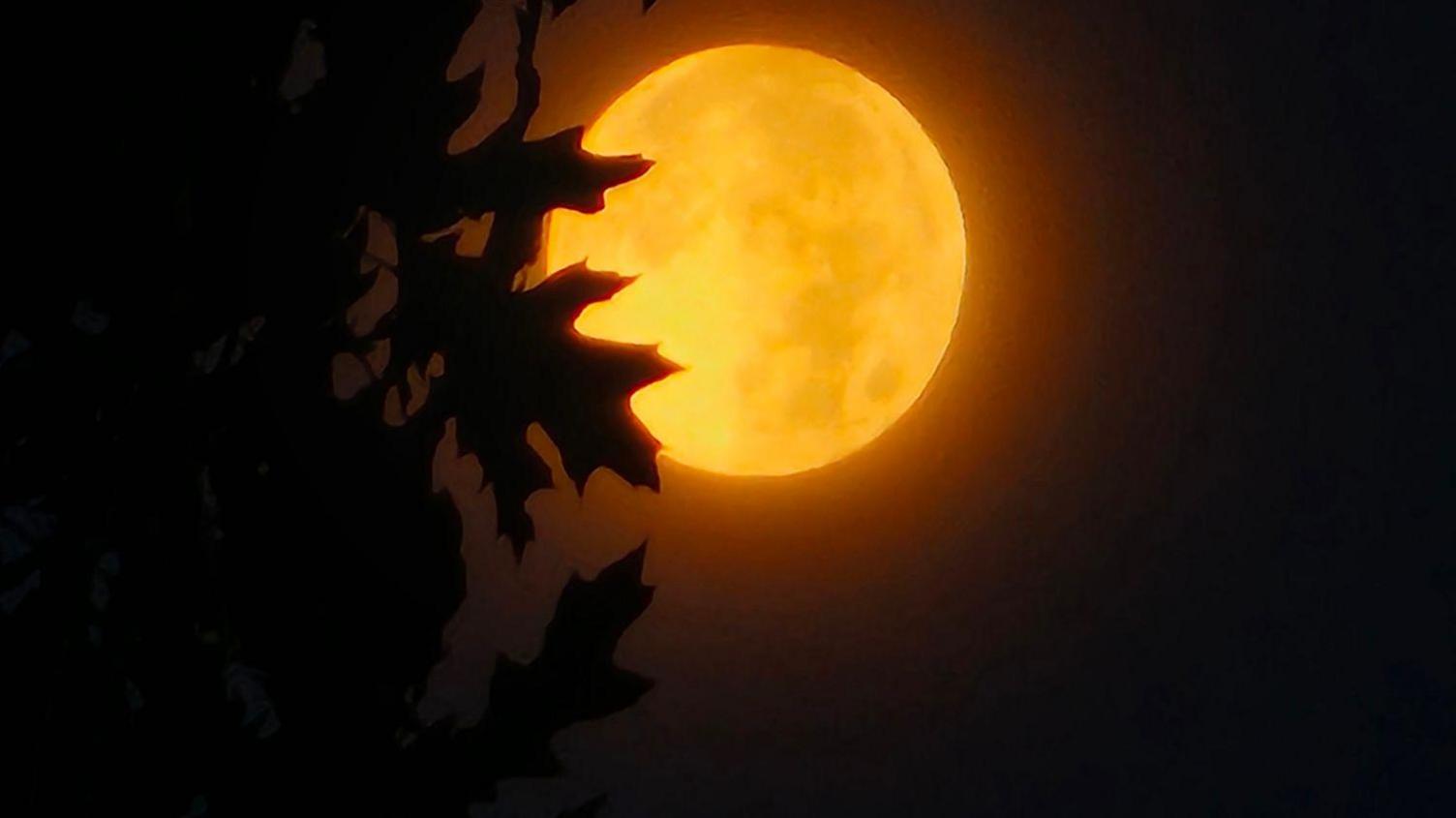Hunter's Moon 2024: Why is October's full Moon special, and when will the supermoon happen?

- Published
Astronomy fans are in for a treat, as it's nearly time for October's full Moon.
It will appear in our skies later this week, and what's more, it's set to be the brightest supermoon of the year!
Supermoons happen when the Moon is closest to the Earth, appearing bigger and brighter than normal - up to 15% brighter and 30% bigger than regular full Moons.
But why is October's called the Hunter's Moon, and when will it happen?
Keep reading to find out!
More like this
- Published5 October
- Published3 October
- Published25 September
Why is the October Moon called 'Hunter's Moon'?
The full Moon has many different names throughout the year. We normally have 12 full Moons a year, each with its own informal nickname.
October's full Moon is also called the Hunter's Moon, as it occurs at the time of year when hunters would traditionally have been most active - planning for the winter months ahead and hunting animals for food.
When is the next full Moon?
This year the Hunter's Moon will take place just after midday on Thursday 17 October at 12.26pm.
The Moon will appear full for approximately three days around this time.
October's full Moon will also be the third of four back-to-back supermoons.
It will also be the brightest of all the supermoons this year.
What is a supermoon, and why is it so bright?
A supermoon is when the Moon appears bigger than usual.
This occurs because the Moon's orbit around Earth isn't a perfect circle: it's an elliptical or egg-shaped orbit.
So sometimes the Moon is closer to Earth and sometimes it is further away.
The Moon doesn't change size, it just looks bigger when is closer.
Why do monthly full Moons have names?
Throughout history, people have used the Moon and the light it reflects, for different tasks such as hunting, planting and harvesting.
Cultures across the world give these full Moons different names to describe what was happening in the month.
The modern calendar no longer follows the Moon's phases exactly, so sometimes there's more than one full Moon a month, which is known as a Blue Moon.
Why not use our Moon calendar below to find the name for your birth month's full Moon?
What are the names of all the full Moons and what do they mean?
January: Wolf Moon
Native Americans and Medieval Europeans called January's full Moon a Wolf Moon, it's thought to be because wolves howled more at this time of year as there was less food.
February: Snow Moon
The snowy weather of February in North America led to the name Snow Moon. Other common names include Storm Moon and Hunger Moon.
March: Worm Moon
The Worm Moon appears in March at the end of winter when little creatures like worms begin squirming out of the ground. It's also called Milk Moon.
April: Pink Moon
Disappointingly, the Pink Moon isn't actually pink. It's named by native Americans after pink flowers called wild ground phlox that bloom in early spring and appear throughout the United States and Canada.
It is also called Egg Moon and Fish Moon in other cultures.
May: Flower Moon
May's flowers are the reason for this month's name.
Other names include the Hare Moon, the Corn Planting Moon, and the Milk Moon.
June: Strawberry Moon
Native American Algonquin tribes named this Moon the Strawberry Moon. This is because they would harvest strawberries at this time.
It's also called the Honey Moon, Rose Moon and Mead Moon.
July: Buck Moon
This is the time when a buck, a male deer, grows its full antlers. This moon is also called Thunder Moon after the summer thunder storms.
August: Sturgeon Moon
People in North America caught sturgeons, a type of fish, around this time.
It is sometimes known as a Grain Moon or Green Corn Moon or Black Cherries Moon in some cultures.
September: Corn Moon
If it is the nearest full Moon to the autumnal equinox it is called the Harvest Moon instead.
September's full Moon is probably called Corn Moon because that's when crops are gathered at the end of the summer season.
At this time, the Moon appears particularly bright allowing farmers to continue harvesting into the night.
October: Hunter's Moon
This is the time when people would plan for the winter months and hunt animals for food.
Like September's full Moon it is sometimes called the Harvest Moon.
November: Beaver Moon
Beavers often start building their dams about this time which is where it got its name.
It is also sometimes called Frost Moon.
December: Cold Moon
The winter chill gave December's full Moon the name Cold Moon.
Other names include the Long Night Moon and the Oak Moon.
